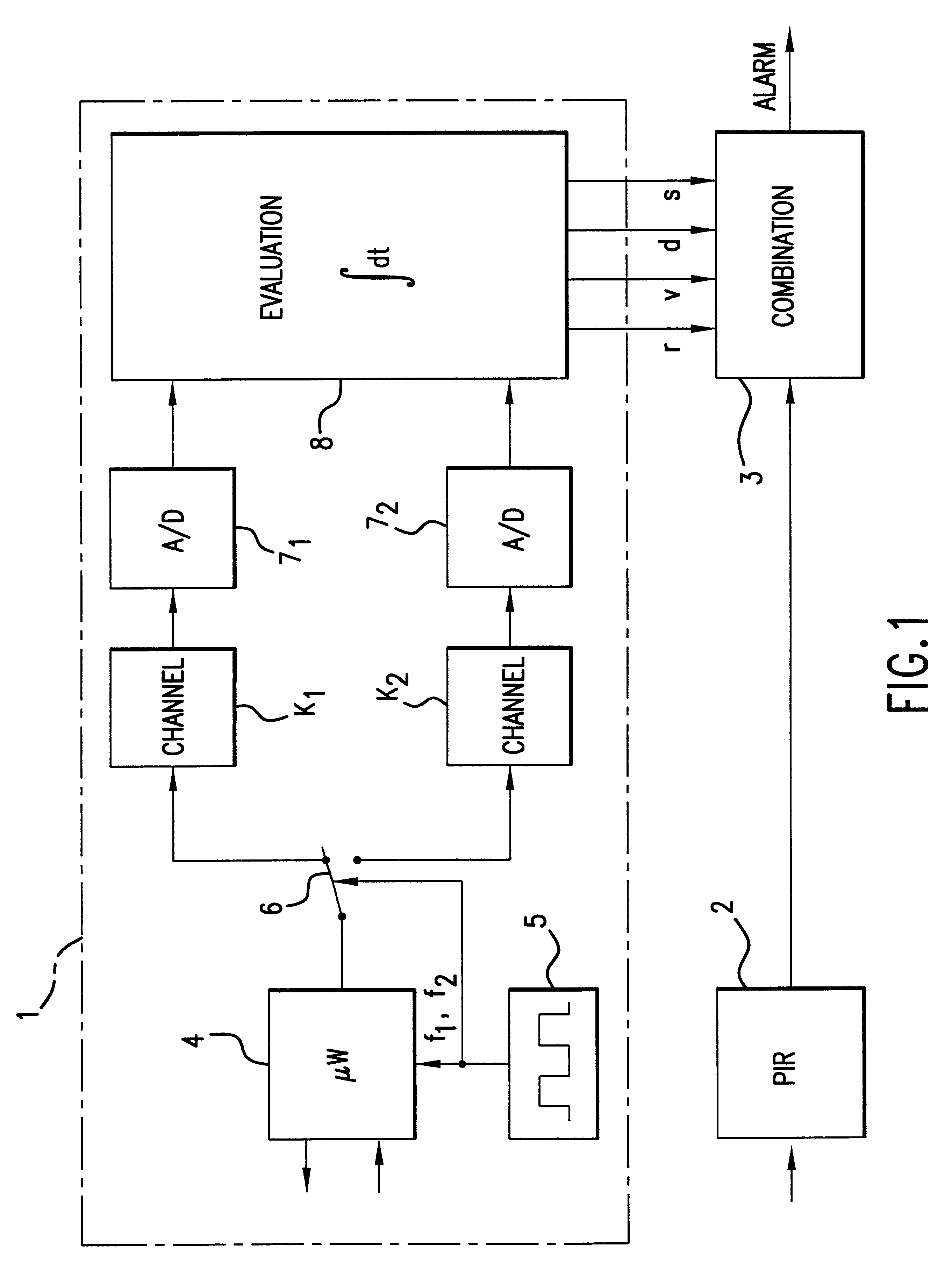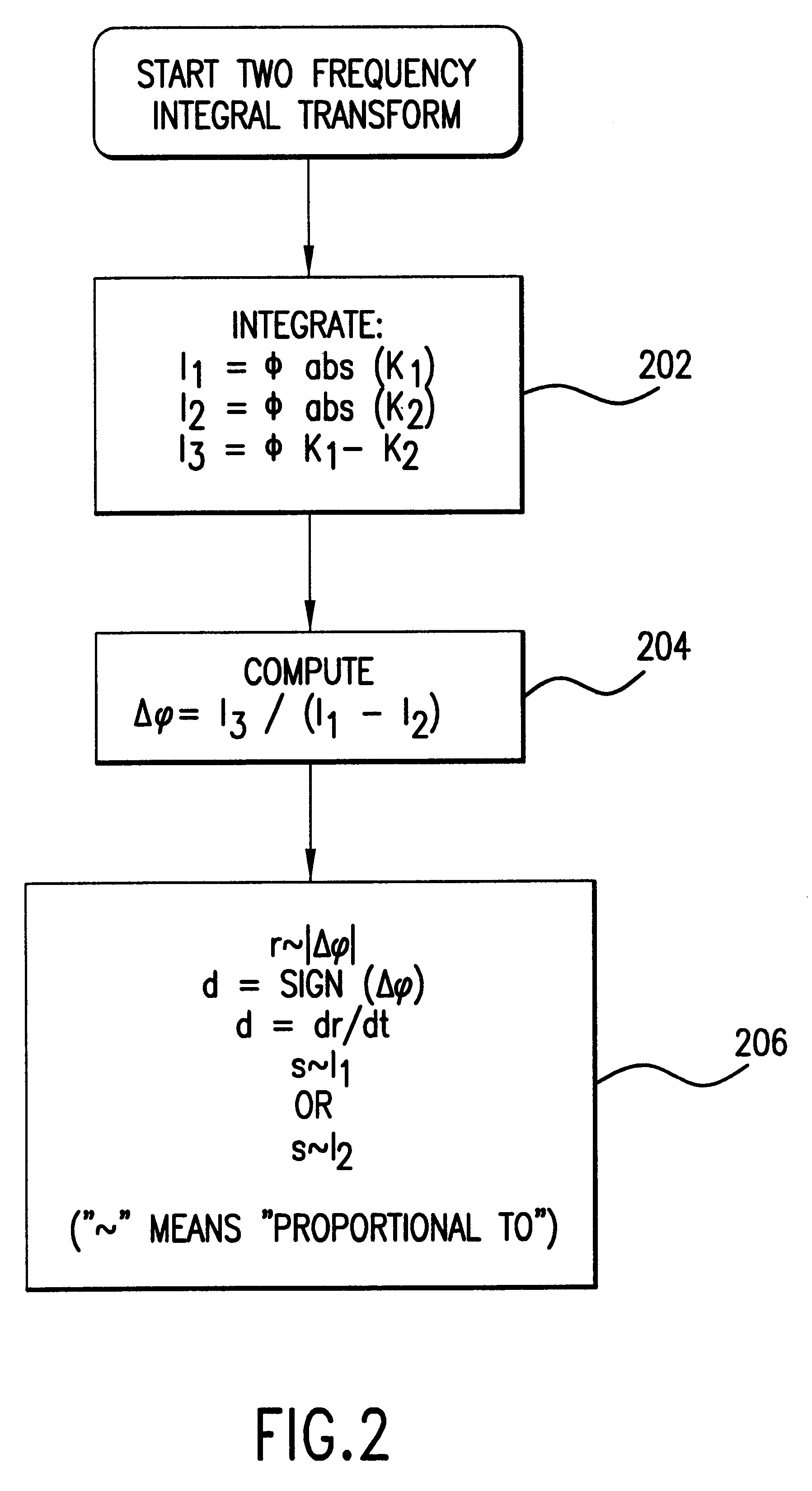Motion detector based on the doppler principle
a technology of motion detector and doppler principle, applied in the direction of burglar alarm short radiation actuation, instruments, measurement devices, etc., can solve the problems of reducing the noise of the detector, making the distinction between distant humans and small domestic animals at a lesser distance considerably more difficult or even impossible, and achieving the effect of superior noise suppression and other interference suppression
- Summary
- Abstract
- Description
- Claims
- Application Information
AI Technical Summary
Benefits of technology
Problems solved by technology
Method used
Image
Examples
Embodiment Construction
The dual detector shown in FIG. 1 includes a microwave detector 1, a passive infrared detector 2 and a common processing stage 3. At the output of the evaluation stage an alarm signal is obtainable if an unauthorized intruder is present in the room under surveillance monitored by the detector shown. The microwave detector 1 contains a microwave module 4 for emitting and for receiving microwave radiation. Associated with the microwave module 4 is a microwave generator 5 that generates a microwave signal containing at least two frequencies f.sub.1 and f.sub.2 that are fed periodically to the microwave module 4 and to a switch 6 disposed downstream of the latter. The microwave module 4 is periodically switched between the two frequencies f.sub.1 and f.sub.2 and the switch 6 is actuated accordingly. While not shown, the microwave module can preferably emit a number of different frequencies, n. In this case, the switch 6 and generator 5 are adapted to selectively generate these n frequen...
PUM
 Login to View More
Login to View More Abstract
Description
Claims
Application Information
 Login to View More
Login to View More - R&D
- Intellectual Property
- Life Sciences
- Materials
- Tech Scout
- Unparalleled Data Quality
- Higher Quality Content
- 60% Fewer Hallucinations
Browse by: Latest US Patents, China's latest patents, Technical Efficacy Thesaurus, Application Domain, Technology Topic, Popular Technical Reports.
© 2025 PatSnap. All rights reserved.Legal|Privacy policy|Modern Slavery Act Transparency Statement|Sitemap|About US| Contact US: help@patsnap.com



